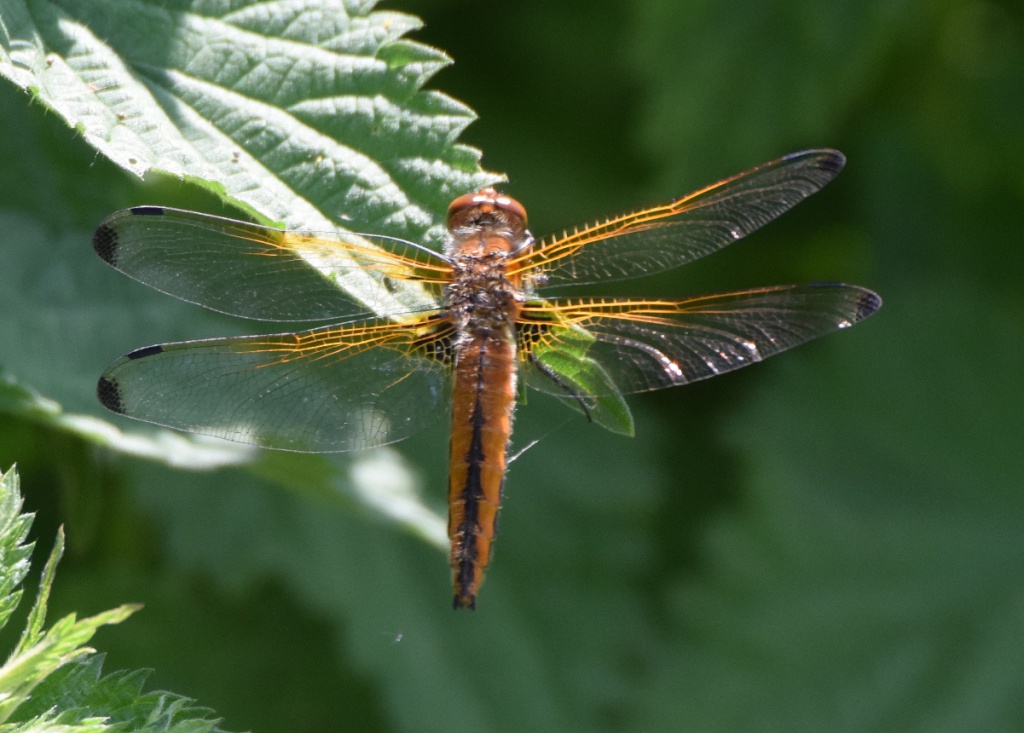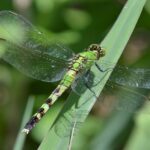Length: 40 to 49mm. The abdomen of the mature male Scarce Chaser is pale blue. Its eyes are also blue. However, prior to maturity the male and female look very similar having deep orange colouration, black triangular shaped markings on the upper surface of each abdominal segment and dark bases to the wings. Synchronised emergence usually begins towards the end of May, and adults can be seen on the wing until early August.
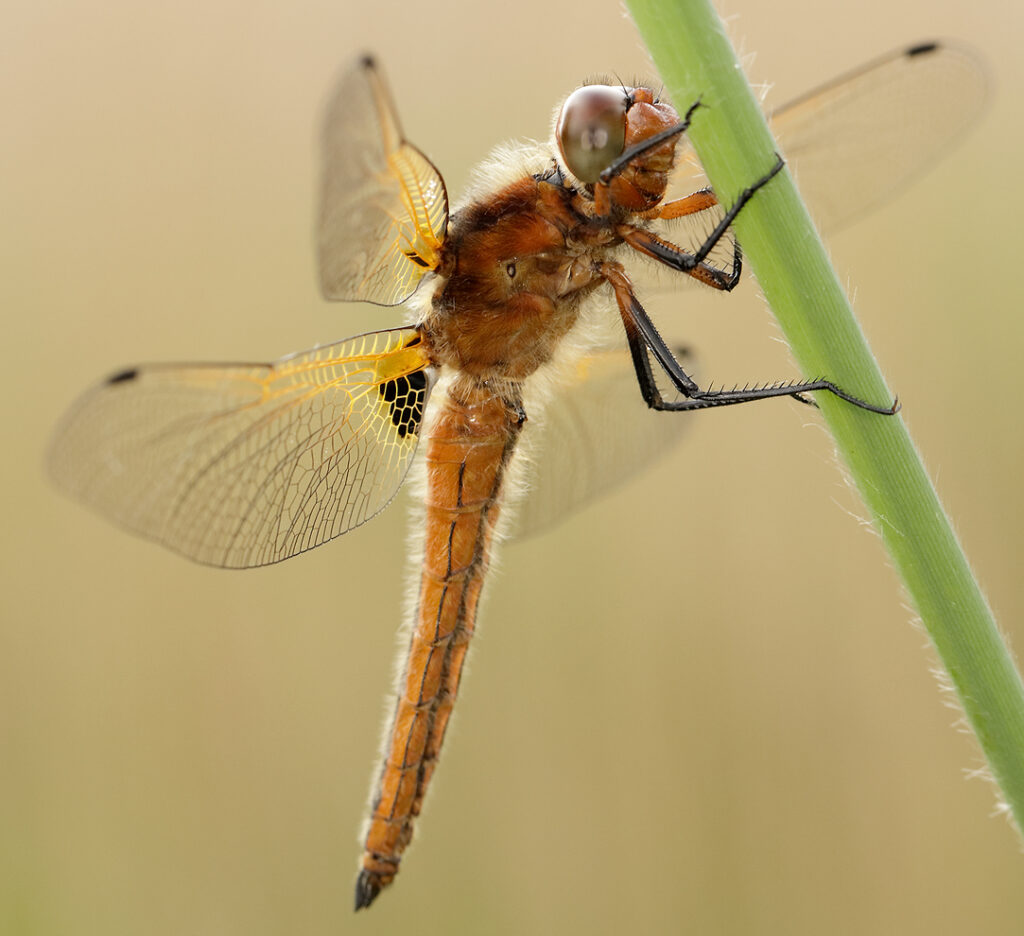
A medium sized dragonfly that has a synchronised emergence towards the end of May.
Male: blue and black body and blue eyes.
Female: ochre with black markings down the middle of the abdomen.
Status & Distribution:Listed as Near Threatened in the British Odonata Red List 2008.
Populations are localised in East Anglia, the East Midlands and parts of southern England from Kent to Devon. The species has expanded its range significantly since 2004.
Habitat:A species of lowland river floodplains that usually inhabits slow-flowing, meandering rivers and large dykes. Occasionally occurs in mature gravel pits and nearby ponds also support populations. Inhabited sites characteristically have good water quality, which supports submerged and floating plants as well as prolific stands of emergent vegetation. Ovipositing females require areas of slow flowing open water, and the adults require some shrub or tree shelter.
Adult Identification
- Length: 40-49mm
- Dark wing bases and often black wing tips.
- Male: blue eyes. Blue body with black tip to the abdomen.
- Female: brown eyes. Ochre colouration with black markings down the middle of the abdomen.
Scarce chasers are just that: scarce. They are a species of dragonfly that is considered rare, its small local populations at risk. They are listed in Category 3 in the British Red Data Book which documents rare and endangered species in the UK. Category 3 lists species that are estimated to exist nationally in only fifteen or fewer 10 km squares.
Larval Information
Skimmers and Chasers have a squat, spider-like body-shape, a square back to the head and small eyes.
22-25mm
Eyes point out to the side of the head.
Labial palps have weak serrations.
Dorsal spines long and curved.
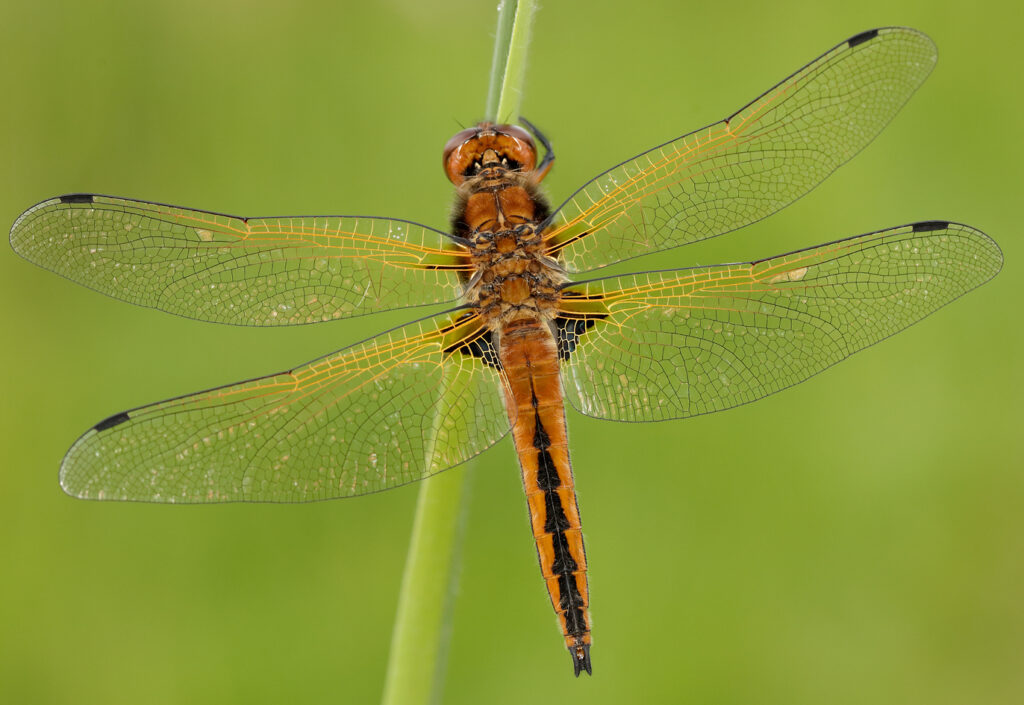
The scarce chaser (Libellula fulva) is a species of dragonfly. The adult male has a bright blue abdomen with patches of black, while the adult female and juvenile male each have a bright orange abdomen. It is about 45 mm in length with an average wingspan of 74 mm. It is distributed throughout Europe. This dragonfly is considered a species of special concern in Great Britain due to loss of its specific ideal habitat.
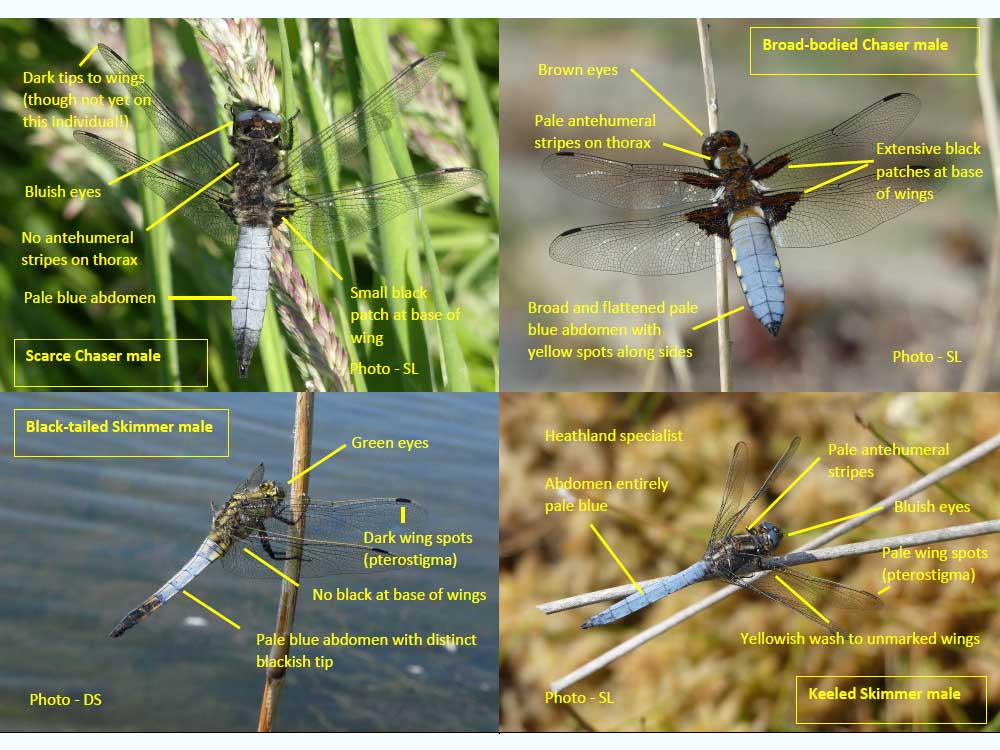
This species lives on floodplains and marshes with dense, abundant vegetation, and females deposit their eggs in slow-current streams. Once deposited by the female, the eggs lie embedded in the mud of the riverbed and the larvae develop underwater for usually two years. Adults live from May to August, during which time they mate and lay eggs.
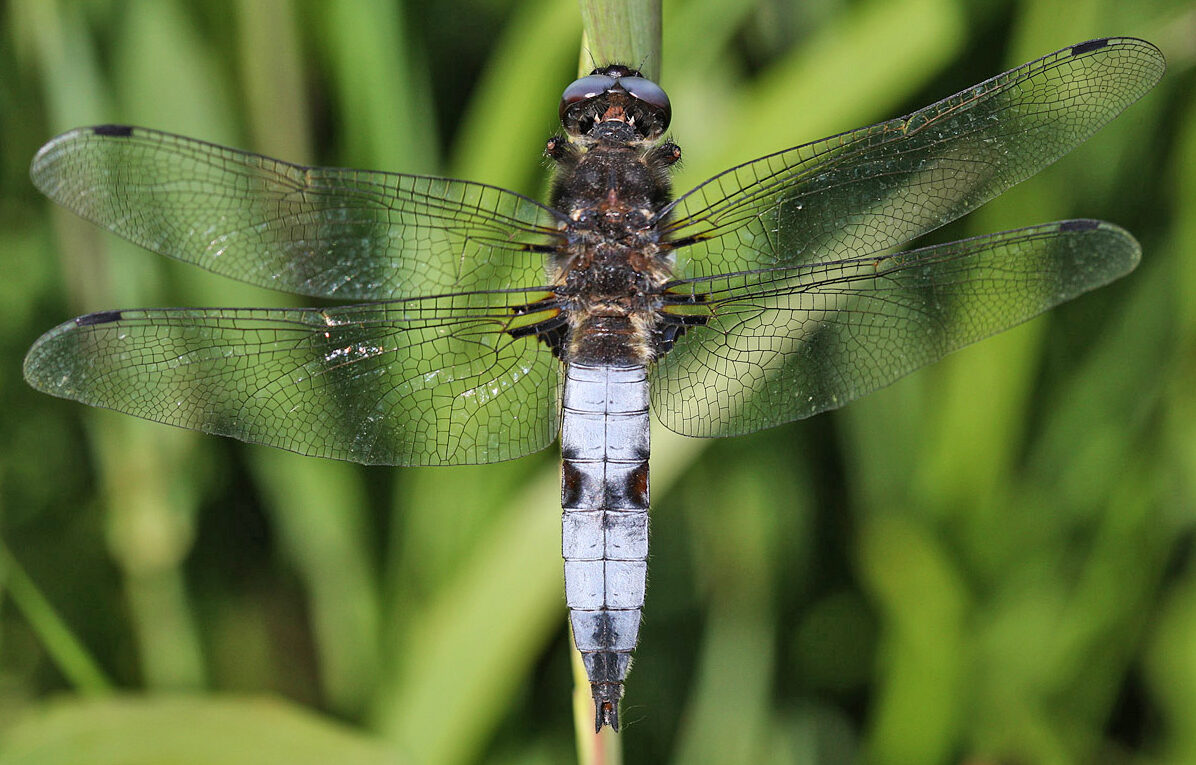
Similar species
Males. Similar species that all have blue abdomens and more-or-less of medium dragonfly size are the Broad-bodied Chaser, the Black-tailed Skimmer and the Keeled Skimmer. Separating them is relatively easy. Scarce Chasers and Keeled Skimmers have bluish eyes, Black-tailed Skimmers have green ones and Broad-bodied Chasers have brown ones. Both Scarce Chaser and Broad-bodied Chaser have black patches at the base of the wings (small and large, respectively) whereas the two skimmers have no patches. Scarce Chasers uniquely can have smoky patches on the wing tips though these are not always obvious or present. Scarce Chasers and Black-tailed Skimmers have noticeable dark tips to the abdomen; the other two don’t. The Broad-bodied Chaser has a very broad abdomen with noticeable yellow patches on the side. The Black-tailed Skimmer has a yellow leading edge to the wing (costa).
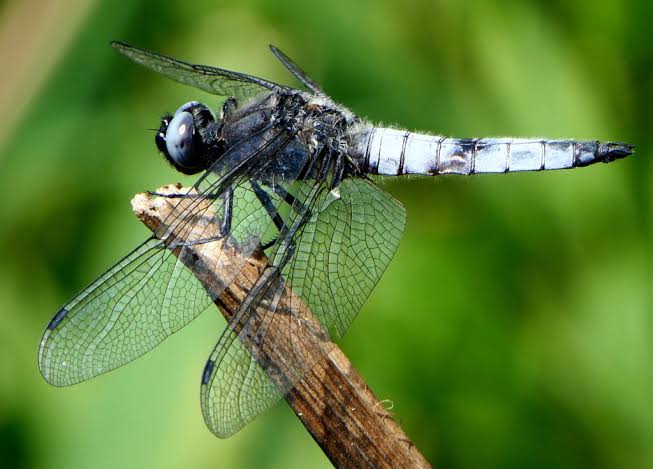
Females. In addition to the species mentioned above, isolated females must be distinguished from Four-spotted Chasers. The latter are brown, rather stocky dragonflies and can quickly be identified by the four dark spots on each pair of wings. The patches on the wings noted for the males holds true for the females. Female Broad-bodied Chasers have the same broad abdomens of the males. Female (and immature male) Scarce Chasers are unmistakable with their orange abdomen and a dark, jagged line running down its length. The female (and immature male) Black-tailed Skimmers have a rather yellowish abdomen strongly marked with black that creates the impression of a rather triangular abdominal cross-section. Fortunately, Keeled Skimmer normally can be ruled out in all but certain heathland locations. Unlike the other three species it has yellowish (rather than dark) wing spots (or pterostigma).

